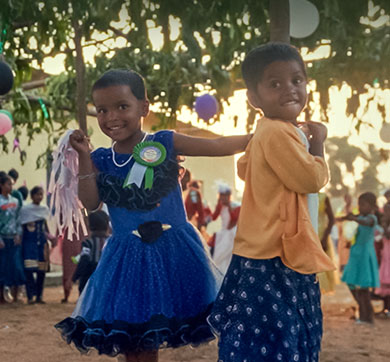November 2025 | 1814 words | 7-minute read
Shravasti in Uttar Pradesh has seen better days. Once the flourishing capital of the Kosala kingdom, it thrived at the crossroads of major trade routes. It was a bustling commercial hub and religious centre — it is believed the Buddha spent much of his life here.
Cut to the present. Shravasti still tops the charts — but for less favourable reasons. The 2023 National Multidimensional Poverty Index by NITI Aayog ranks Shravasti as India’s poorest district, with 74.3% of its population multidimensionally poor. The adjoining Balrampur district follows at 69.4%. High levels of unemployment, illiteracy, and poor sanitation, and alarming rates of malnutrition and anaemia among children and adolescent girls paint a picture of entrenched deprivation.
Rising up
Shravasti’s decline need not define its destiny. In recent years, a determined effort has begun to rewrite the story of India’s most underserved districts. In 2018, the government launched the Aspirational Districts Programme (ADP) to transform 112 underdeveloped districts through data-driven interventions and grassroots innovation.
Building on this, the Aspirational Blocks Programme (ABP) was introduced in 2023. It focuses on 500 blocks in 329 districts, including 160 from the ADP. Led by state governments, progress is tracked through key performance indicators (KPIs) across critical socio-economic areas, including health and nutrition, education, financial inclusion and skill development, among others.

Driving change on ground
Several Tata companies are among the changemakers, advancing ADP KPIs through impactful initiatives. Tata Motors, for instance, works with 16 gram panchayats across Maharashtra, Gujarat, and Uttar Pradesh as part of its Integrated Village Development Programme (IVDP).
Launched in 2018 in Jawhar, an aspirational block in Maharashtra, IVDP addresses the multifaceted challenges faced by tribal communities. The pilot — a collaboration between Tata Motors, the Government of Maharashtra, BAIF Institute for Sustainable Livelihoods and Development, and the Pathardi Gram Panchayat — is a promising blueprint for transformation.
In just two years, average farmer incomes rose 60% — 30 became lakhpatis in FY24 — distress migration fell from 45% to 30%, year-round water access increased to 100%, and 90% of malnourished children recovered.
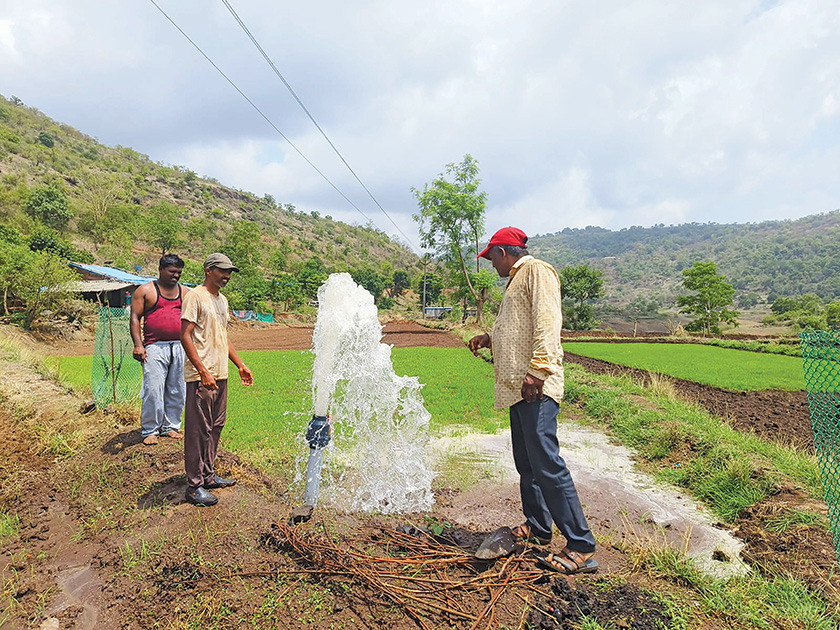
IVDP has since expanded to other states and Tata Motors recently partnered with Shravasti and Balrampur district administrations for development. “However, unlike Maharashtra, we did not have prior connections in Shravasti — no Tata dealer, no manufacturing presence, no extended channel,” says Vinod Kulkarni, Corporate Social Responsibility (CSR) Head, Tata Motors. “So, setting up an IVDP programme in a place where we didn’t know anyone felt like the ultimate test of our concept.”
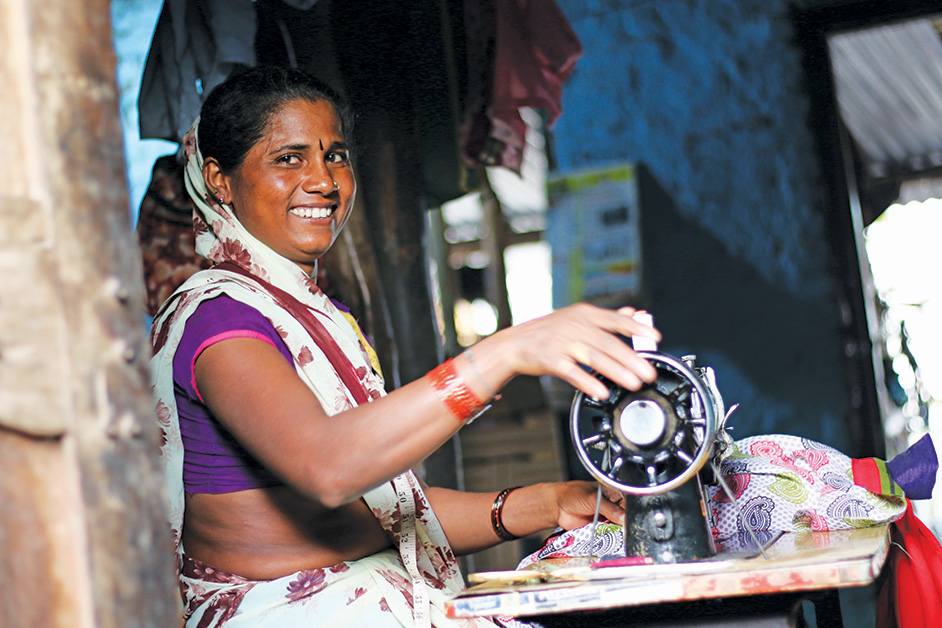
Breaking learning barriers
Historical neglect, lack of political investment, and prolonged economic stagnation make transforming these districts a complex challenge. “The geographical placement of districts has emerged as a central pillar in shaping our program strategy,” says Kishan Gopal Laddha, Program Owner – Literacy Program, Tata Consultancy Services (TCS). “Many are situated along the borders of two or even three states — remote from hubs of connectivity and development. Their underserved status, coupled with low commercial viability, discourages private sector involvement.”
Education and literacy initiatives face greater hurdles. Take, for instance, Alirajpur and Dahod, adjoining aspirational districts on the Madhya Pradesh-Gujarat border. Though separated only by a state line, differing official state languages and tribal dialects create complex language dynamics. Effective measures are needed to navigate not just geographical and infrastructural barriers, but also linguistic and cultural ones.
TCS had to take all these into account when launching TCS Literacy Program in Alirajpur and Dahod in 2000. TCS Literacy Program uses a combination of graphics, sound patterns, and language structures to teach functional literacy at a fraction of the cost and time as compared to traditional methods. So far, TCS Literacy Program has empowered over 26 lakh people across India.

“There’s always the question of whether we should contextualise literacy efforts to local dialects,” says Mr Gopal. “Practically, that’s difficult, because for any official work — filling out forms, accessing entitlements — fluency in the state language is essential.”
To scale its social impact, the company launched TCS 300, a data-based framework to focus on 300 districts where need is the highest and resources are the least, including several from the ADP, through its strategic CSR programmes. These include the TCS Literacy Program and other social development programmes leveraging digitalisation, such as Go Innovate Together, Ignite My Future and BridgeIT.
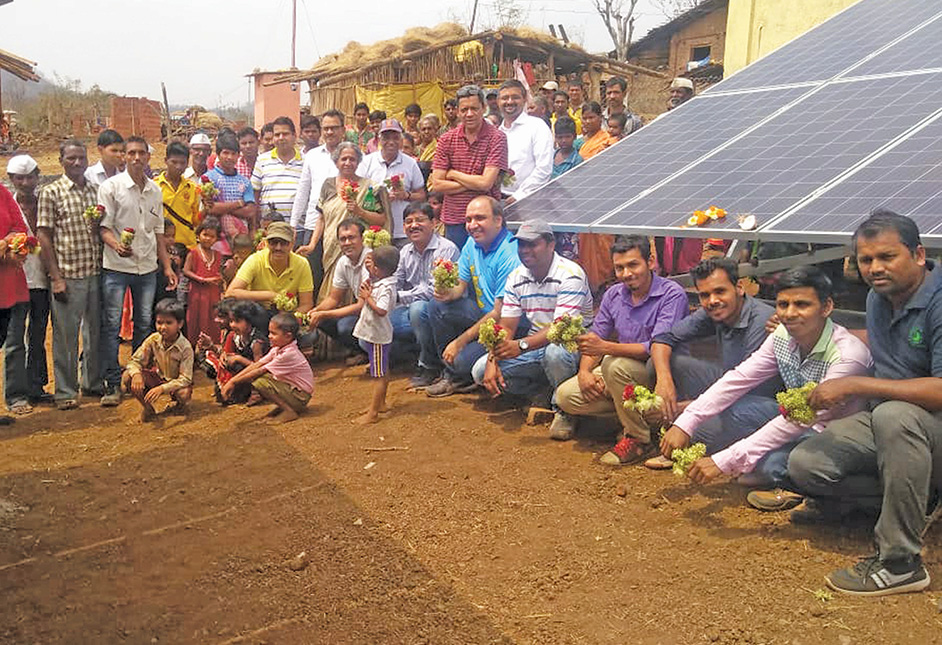
A ray of light
The challenge of venturing where few have gone before has pushed companies to think beyond the conventional. In the tribal heartland of Simdega, Jharkhand, Tata Capital through its Green Switch programme leads efforts to provide energy security to unelectrified communities by using a community partnership model. Green Switch has electrified 99 hamlets across Maharashtra, Jharkhand, and Uttar Pradesh, installing 1.19MWp of solar capacity, according to its FY25 annual report.

“A solar microgrid with battery backup can last up to 25 years,” says Sridhar Sarathy, Chief Ethics Officer and Head of Sustainability and CSR, Tata Capital. “Once you have 24x7 electricity, everything else follows. You get better teachers, better doctors, better engineers — people who see an opportunity to make a difference. That’s the kind of ripple effect we are aiming for.”
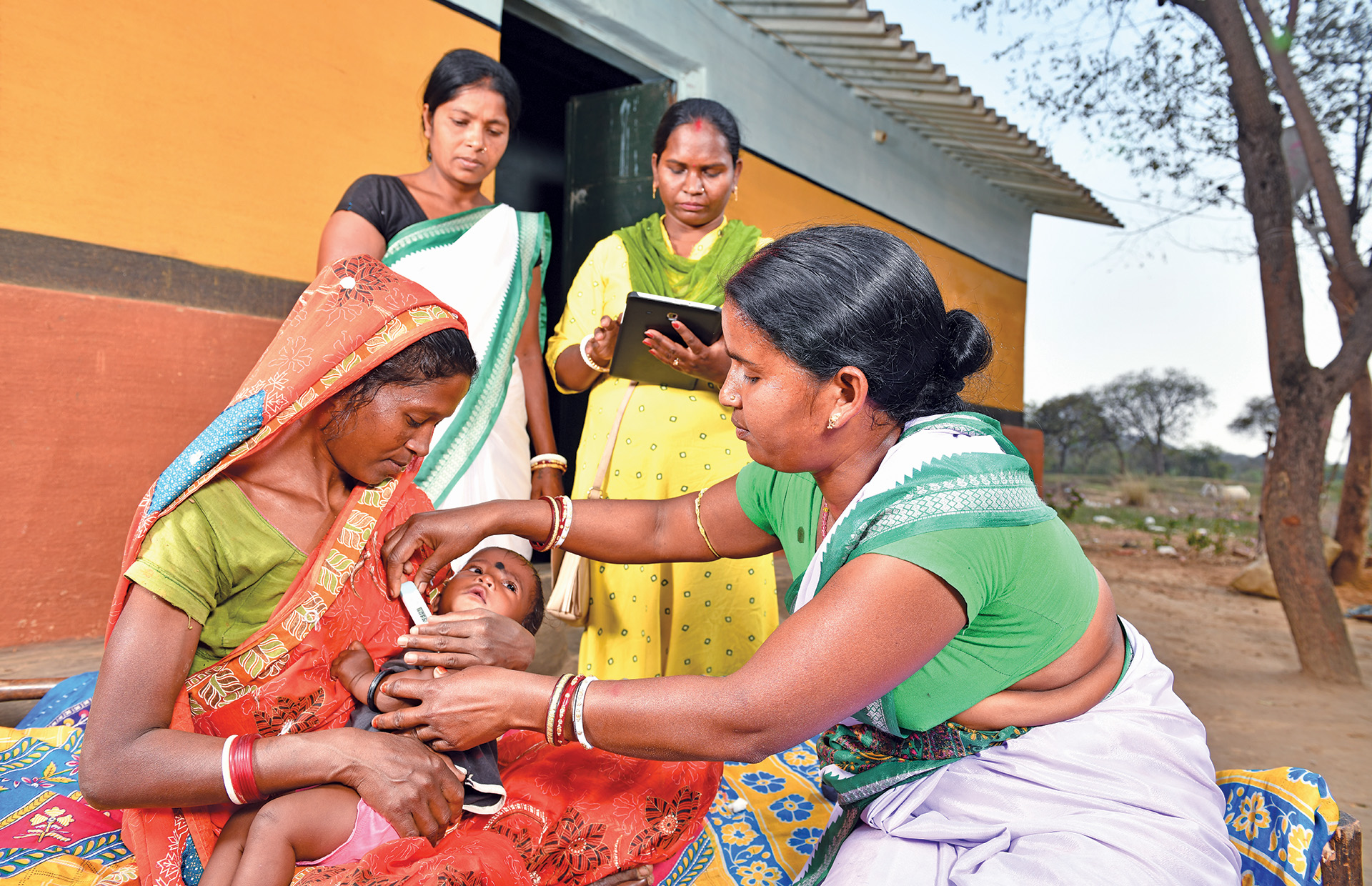
Where there’s health, there’s hope
Tata Steel is all too familiar with the ripple effect. Through the Tata Steel Foundation, it runs initiatives in aspirational districts to support tribal identity, skilling and community resilience. Maternal and Neonatal Survival Initiative (MANSI+) is a key programme that provides quality maternal and child healthcare services, strengthening families and uplifting entire communities.
“We chose Jharkhand’s Seraikela block of Seraikela Kharsawan district for MANSI+’s first phase [from 2010–15] — before an aspirational district concept came in,” says Amit Kumar, Head, Community Health Cluster, Tata Steel Foundation. “By training 199 Sahiyyas [government healthcare workers] and reaching over 83,000 women and children, we reduced neonatal mortality by 61% and child mortality by 55%.”
Following its success, the government of Jharkhand invited Tata Steel Foundation to replicate the programme across the entire Seraikela Kharsawan district. The programme’s second phase (2015-20) coincided with ADP’s launch, accelerating its impact.
“We were also able to fill critical data gaps in government records, in terms of high-risk pregnancies and child health, through a real-time Android application called Operation Sunshine, which was used by the project’s field operatives,” adds Mr Kumar. “Tracking of high-risk pregnancies and health indicators for children under five, such as low birth weight, anaemia and asphyxia, were limited. MANSI+ enabled real-time monitoring and intervention.”
Sanctuary for expectant mothers
Since September 2023, MANSI+ has set up three Prasuti Pratikshalayas (birth waiting rooms) in Jharkhand’s government hospitals. “We noticed tribal women wouldn’t come to a hospital for delivery due to the long travel distances in tough terrain,” says Mr Kumar. “Sometimes, after a false labour, women would return home, and we’d never see them again. To prevent this, we launched the waiting room — and it’s helped improve delivery outcomes.” Each Prasuti Pratikshalaya offers a safe, accessible space for expectant mothers from ~40,000 surrounding households.
To date, MANSI+, designed using a life cycle approach, has impacted 13 lakh+ lives and trained 6,000+ Sahiyyas. It also aligns with 23 of 31 ADP health and nutrition KPIs across three aspirational districts of Jharkhand, making it a blueprint for scalable, sustainable public health solutions.
Measuring impact
Companies constantly refine strategies and use various metrics to evaluate effectiveness. For literacy, TCS uses a multi-pronged approach. “First, the team conducts internal evaluations of learners’ progress,” says Sunil Joseph, Global CSR Head, TCS. “Second, leaners take the National Institute of Open Schooling exam for neo-literates, which serves as an external validation. And third, we look at real-world applications. For example, when we teach digital and financial literacy, we observe people confidently transferring money via WhatsApp. That’s evidence of impact.” TCS tracks these competencies across touchpoints, like Anganwadis, post offices, and gram panchayat offices to assess the impact on livelihoods.
Ongoing monitoring also informs decisions, such as Tata Capital’s sustainability-focused exit strategy. “Before we exit completely, we train and scale up community members,” Mr Sarathy explains. “We teach them how to maintain the solar panels, what to do in case of breakages, and how to tie up with service partners. Otherwise, if a panel breaks, there’s no one to fix it.”
Blueprint for change
These transformations require focused strategic convergence. “It’s about bringing everyone to the table — from government departments to grassroots workers — to co-create solutions that last,” says Mr Kulkarni. Here’s what goes into the planning.
- Formalising collaboration with state governments and establishing shared goals
- Needs Assessment to identify gaps in critical socio-economic areas
- Community engagement to build trust and local ownership via partner NGOs
- Scalable model testing through pilot projects
- Tracking KPIs across health, nutrition, education, etc.
In this together
If there’s one aspect that can’t be overstated, it’s the importance of working with the right partners, according to Mr Nallapalli. “It’s very, very important to have like-minded implementation partners who share the same vision and have a deep and nuanced understanding of on-ground realities,” he says.
This is critical in communities where trust has eroded. “When you go to a place where people feel vulnerable, there’s fear — fear that someone might take away what little they have,” says Mr Kulkarni.
Tata Capital faced similar mistrust in Simdega. “The first question anyone asks is, ‘Why have you chosen us when there are so many places you could go to?” reveals Mr Sarathy. To build trust, the company piloted a project in Simdega, with a well-established foundation that has a strong grassroots presence. “The foundation helped us gain acceptance and understand the local context better,” he says.
Pathway for growth
Through their work in India’s aspirational districts, Tata companies are seeking to demonstrate that meaningful change begins with listening, learning and deep local engagement. Their commitment to inclusive development rebuilds trust and guides communities to unlock their potential. The impact is seen in the lives changed and futures reimagined.
—Anju Maskeri













